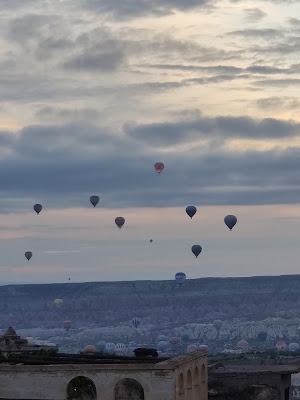Rajasthan has a funny climate. It is so hot and dry in summer that I can make sub-dried tomatoes in just one afternoon. But sometimes, for short periods, it pours. When it pours at night, my first action in the morning is to check the drains for clogs. Else, the water collects there and everything around them which can soak up water, will do so.
One such casualty is my newspaper. Happened again today morning. I tried separating the pages to dry them under the fan (they tend to stick together when they are wet) but I only got 10 torn pages. The soaked newspapers just turned to damp fragile mass. So I decided to use more intense method, Iron. I realised that if I dry one side of the paper the other side is still wet. And when I turn over to iron the other side, the first side soaks up as much moisture as possible from the other side. So ironing a newspaper is an iterative process. First side, second side, first side again, second side again....
Well, one mystery was solved by this exercise, " Why Jeeves ( in PG Woodhouse novels) irons the newspapers. In a country which is wet most of the year, very likely he is regularly in the same situation as me. It must have therefore become a ritual... makes sense. The crackle of the dry ( or dried) newspaper is often enough incentive for my cat to attack it. Must be working to get the lords out of their morning slumber. Very useful!
Pondering upon the uses of a newspaper in an Indian household... no I don't need them to get my lord husband out of bed; he is usually the one who wakes up the whole household ( and neighbourhood!) even after the kids flew the coop. During the pandemic when the newspapers were not being delivered, the most unhappy person was my maid. I had often seen her, in past, sneaking out a bundle of old newspapers while leave for the day. If she happened to come across me at that time she sheepishly explained that they were to line the shelves in her house. Any why just hers, Newspapers have been the primary choice of shelf/ drawer liners throughout my childhood.
Another regular use of newspapers during my school days was the "under-cover" covers for the books... yes under-covers. The top cover was brown with the school logo and label. To provide strength to the top cover ( brown cover costs, old newspaper is free) there was an undercover. I still find under-covers of newspapers in some of my old books. Glossy paper like those from magazines / Calendars were preferred, but those were rarely available at that time; newspapers were the vanilla variety.
I have often used a rolled up newspaper to whack a truant child, lots of noise but very little physical damage. These days I use them to make sewing patterns, noting down a telephone number or grocery list on the margins. My sister used to line the kitchen table top with newspapers daily while cooking and bin it after she was finished. No cleaning required. I reach for the newspaper if I spill anything...reaching for the kitchen paper is not preferred, after all kitchen paper costs and old newspaper is free, and newspaper is faster if you don't mind the black ink marks. I have often smacked the flies or shooed away a stray larger flying varieties ( birds). If there is any still left after my maid takes her share, they are collected and sold at a princely sun of 20 Rs / kg. That almost pays for 20% of my monthly newspaper bill.
Now-a-days when online news is invading us at all times of the day, newspapers have the old world charm. Only those who enjoy their morning cuppa with them can appreciate that itself is worth the price. I, for one, am not cancelling my subscriptions for a long time to come.

















